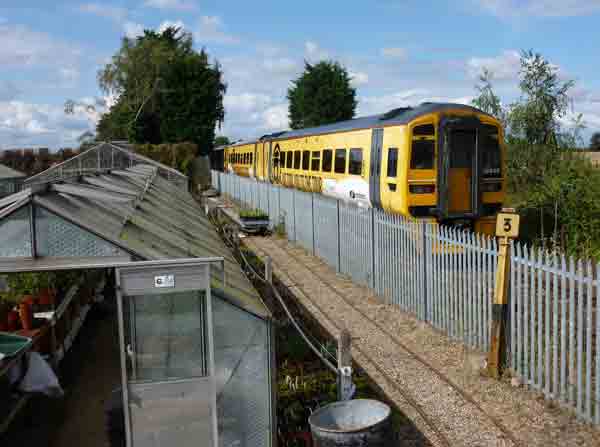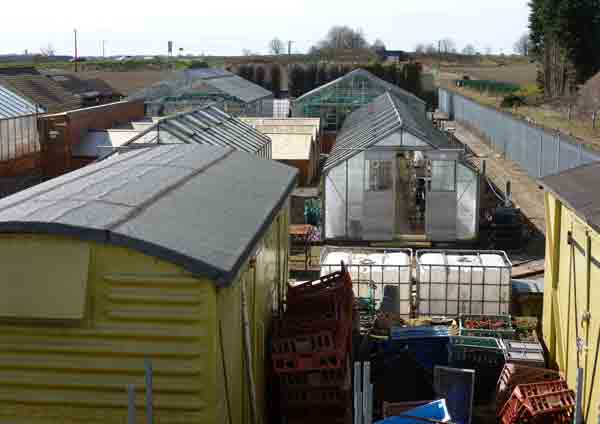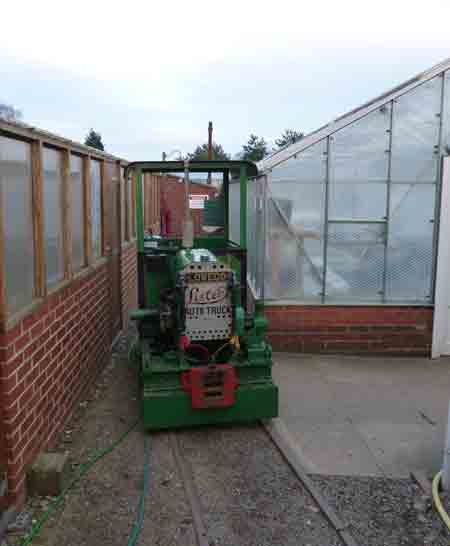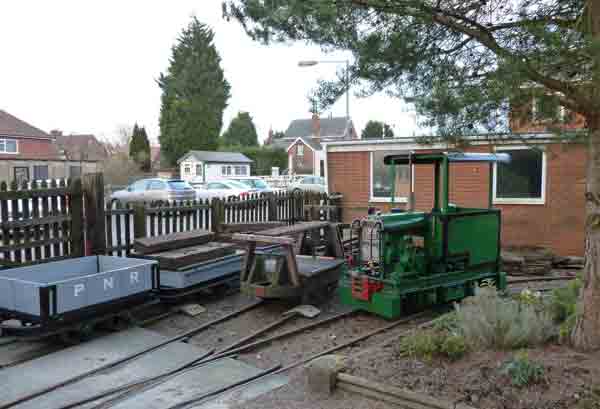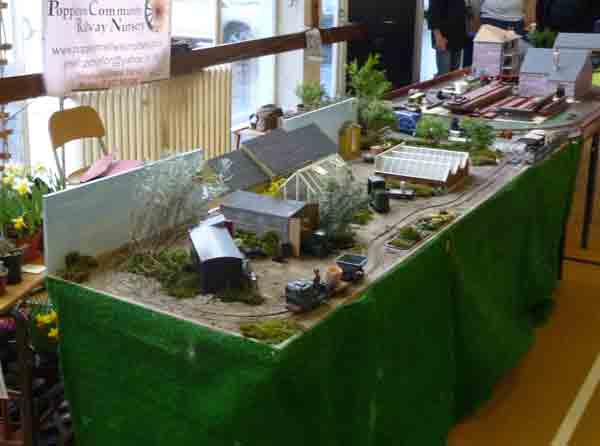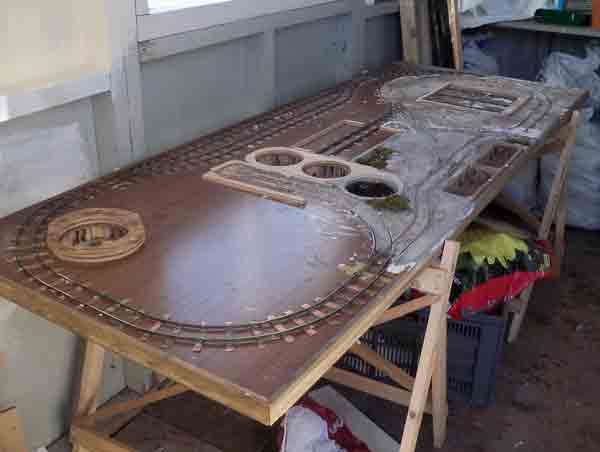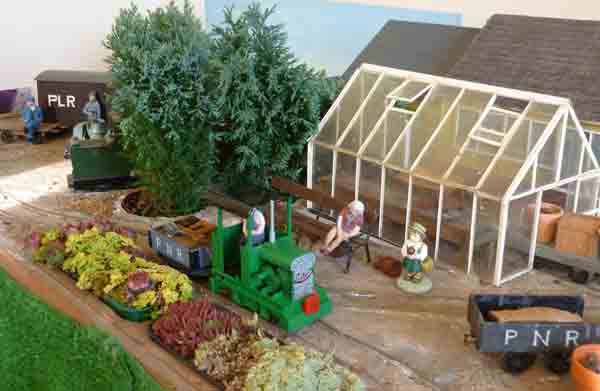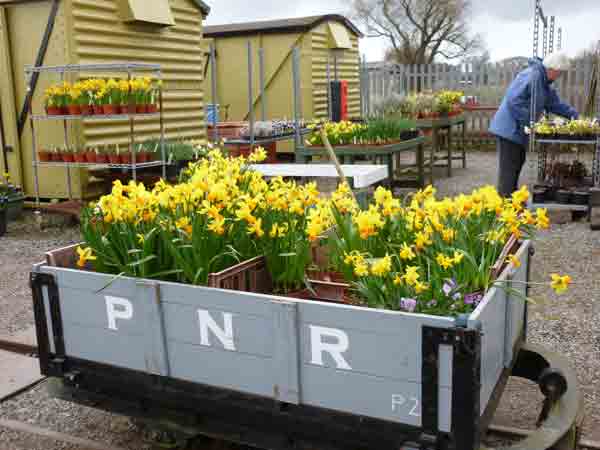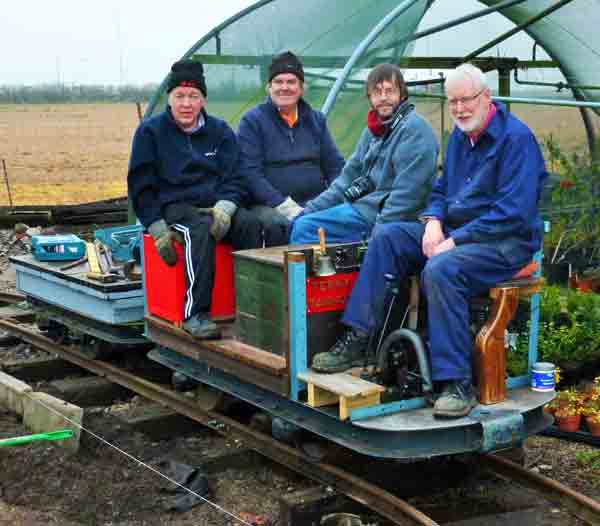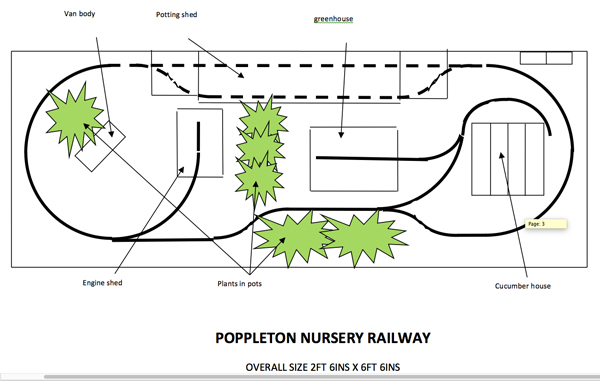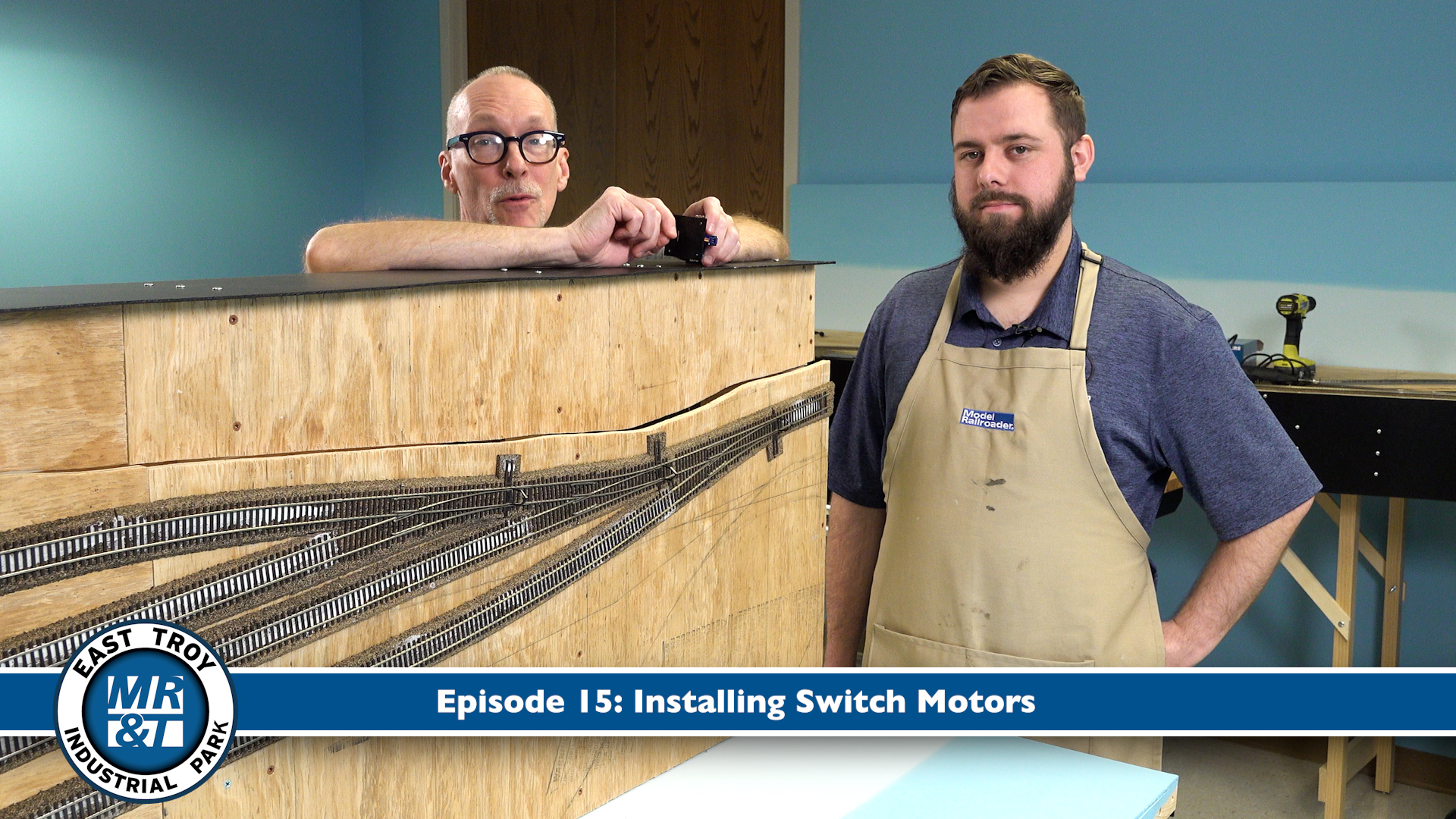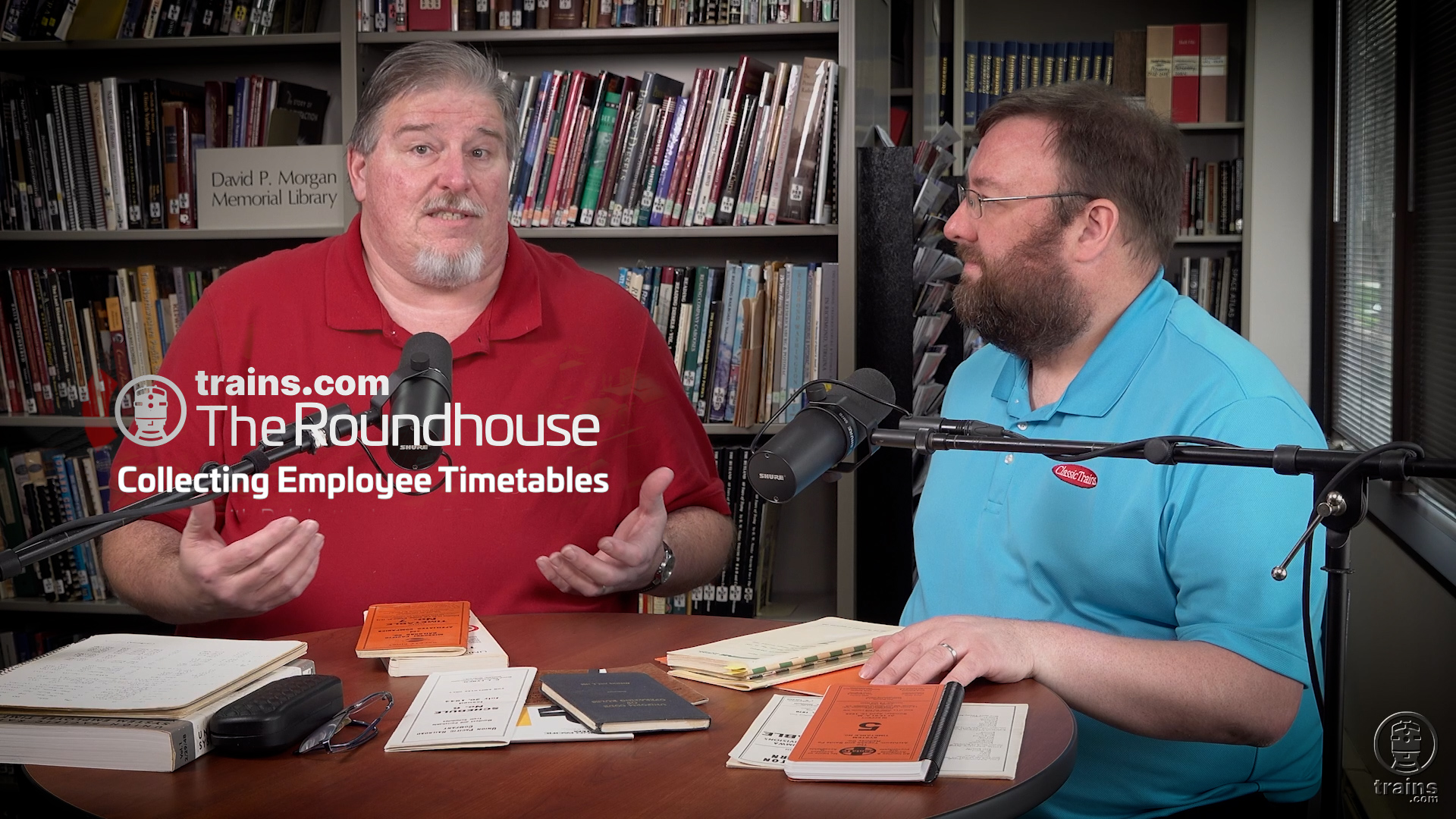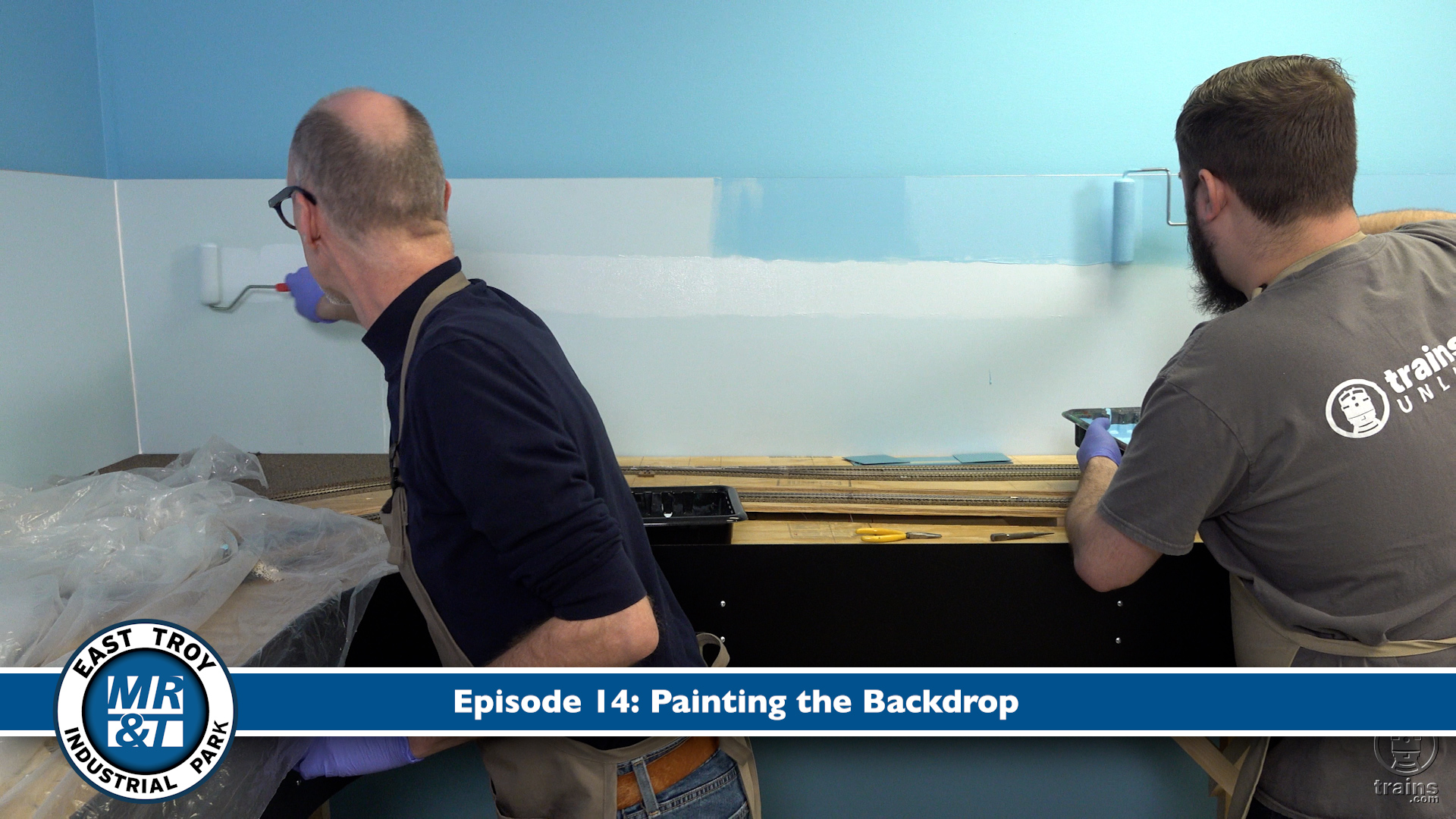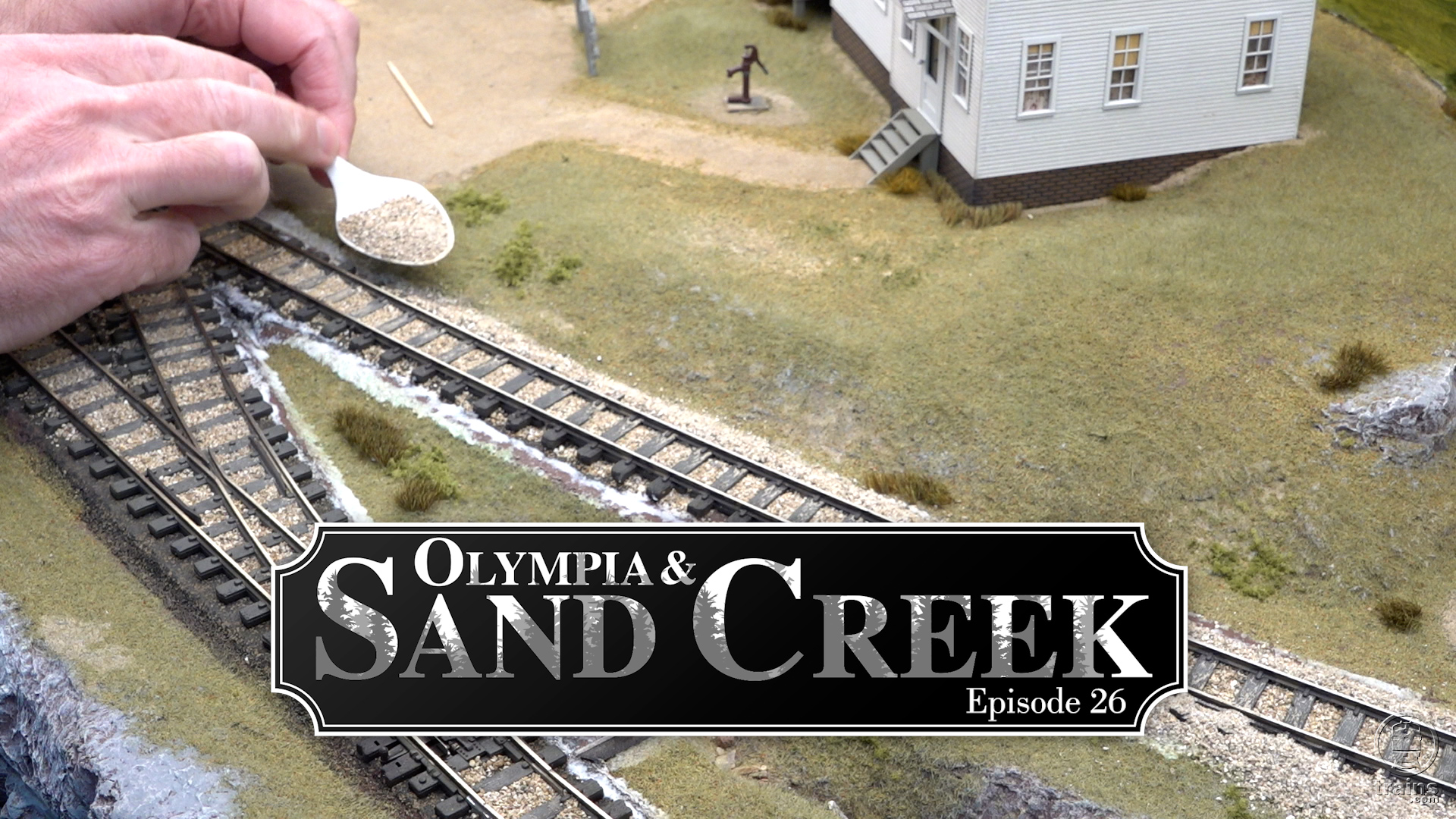Thank you to The Association of 16mm Narrow Gauge Modellers, where this was first published.
Poppleton Nurseries, adjacent to Poppleton station on the York to Harrogate line in North Yorkshire, England were built during the Second World War to grow vegetables for railway refreshment rooms and hotels. After the war, it provided plants for the hundreds of station gardens across Yorkshire and the North East, as well as landscaping projects and special events such as royal trains. The red carpet is still here although I imagine Her Highness would not be impressed by the state it’s in now! It has recently been laid out on one of our open days for the public to see. The internal two-foot gauge railway was built when the nursery was extended in the 1980’s and was used for moving plants and materials around the restricted site. A diesel-engine Simplex locomotive was used to shunt wagons along a short stretch of track, although often the trucks were pushed by hand. Poppleton Nursery and railway were abandoned a few years ago and its locomotive and most rolling stock sold or given to interested groups.
The nursery is still owned by Network Rail but is now being leased and run by a volunteer group, currently a not-for-profit company, but working towards charitable status. The site is gradually being restored after a few years of neglect.
Poppleton Community Railway Nursery has a partnership with the National Health Service in the York area, which has found horticultural skills training to be therapeutic to adults recovering from mental health crises, and they grow most of the plants with the nursery’s own volunteers and other groups.
When the Nursery closed in 2006 the railway was shortened to about 150 yards. The remaining section of the railway plus sidings are now back in use and has also been extended on the site with the addition of a balloon loop at one end making a total run of about 250 yards. We use a few hand pushed wagons and a motorized wagon to move materials around the site. The most recent addition to the stock list is a Lister diesel locomotive from the Abbey Light Railway in Leeds acquired when that railway closed two years ago.
The Model
We have built a 16mm scale railway on 32 mm gauge track to promote the Nursery and is used on open days, plant sales, and other local events to publicise what we do and where we are. We have shown the layout at Narrow Gauge North in Leeds on two occasions when we also had plant sales.
The railway is built on an old flush door found on the site and although it is not an exact model of the railway in the nursery it does give an idea of what the site is like. The model is a continuous run but has some of the actual buildings represented including the engine shed, one of the greenhouses, the potting shed and the cucumber house which is a half buried greenhouse to aid insulation. As this is a model in the style of the nursery we use real plants on the layout when it is being exhibited, a real portable “garden railway”!
Track and points were hand built from some old rail we had in stock soldered to copper clad sleeper strip. Rail was curved by using a home made rail bender constructed from 3 sets of washers on the jaws of a workmate; 2 sets on one jaw and the other set between them but on the other jaw. Rail is inserted between the washers and the jaws tightened so that when the rail is pulled through it forms a nice even curve. Locos and stock are small industrial diesels and a few skips and other wagons. We usually use an IP Engineering O&K midget and an IP Ezee Rapier as well as a scratch built models of our motorized truck “Terry Stanhope” and the Lister “Lowco”. Others are available including a scratchbuilt Ruston and a scratchbuilt Simplex. One of the features, which seems to amuse the public is a hand pushed skip wired as a shuttle, which runs backwards and forwards into the greenhouse. It is actually wired as a section of 3-rail track isolated from the rest of the layout as we didn’t have a motorized chassis we could adapt for 2-rail.
Buildings are mostly built from wood, card and plastic with added detail. The engine shed was built from flattened soup tins to represent the corrugated iron of the original. The greenhouses are made from a shell of clear plastic with roofing bars glued on. The interiors include representations of plants made from pieces of colored paper and colored pins.
Operation is usually to run a couple of short trains round the layout in the same direction trying hard to stop them catching each other. Just for variety we then run trains in the opposite direction using the passing loop hidden inside the potting shed.
Most of the track was built off site and then assembled during Thursday afternoons when the volunteers meet at Poppleton. It only took a few months to build although it might have taken a bit less if we hadn’t tried to do it in the depths of winter in a shed, which is normally unheated so everything froze!
As always there are still things that could be added but the layout now serves its purpose as a showcase for Poppleton Nursery.
Details of the nursery and its railway can be found on the website, www.poppletonrailwaynursery.co.uk. Visitors are always welcome by appointment as there is not always someone on site. Volunteers are always needed to extend the track and restore the railway.





